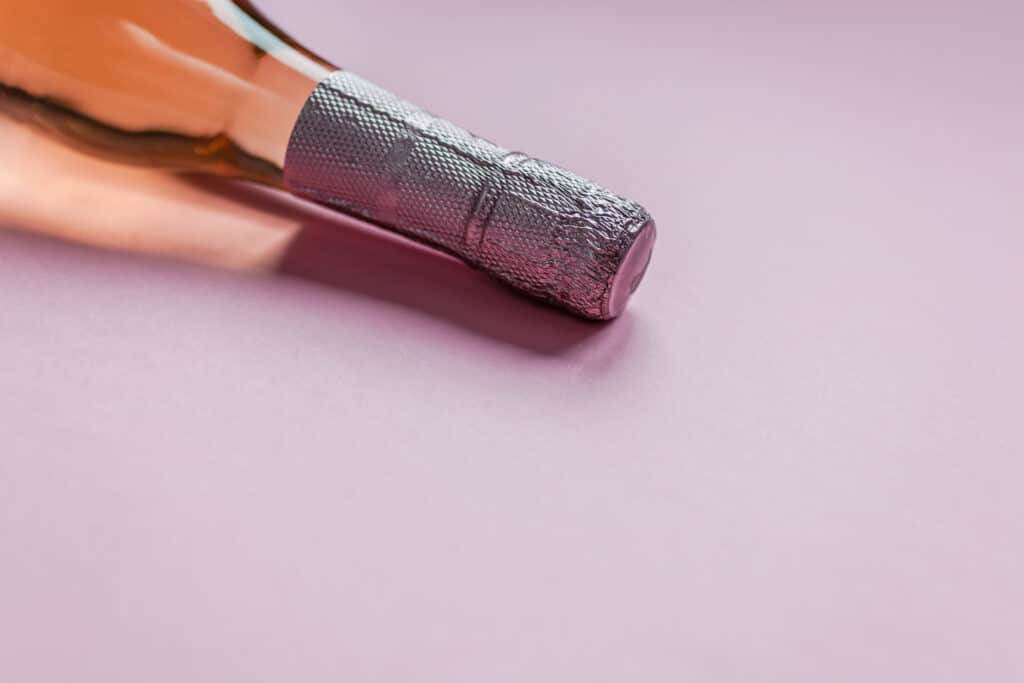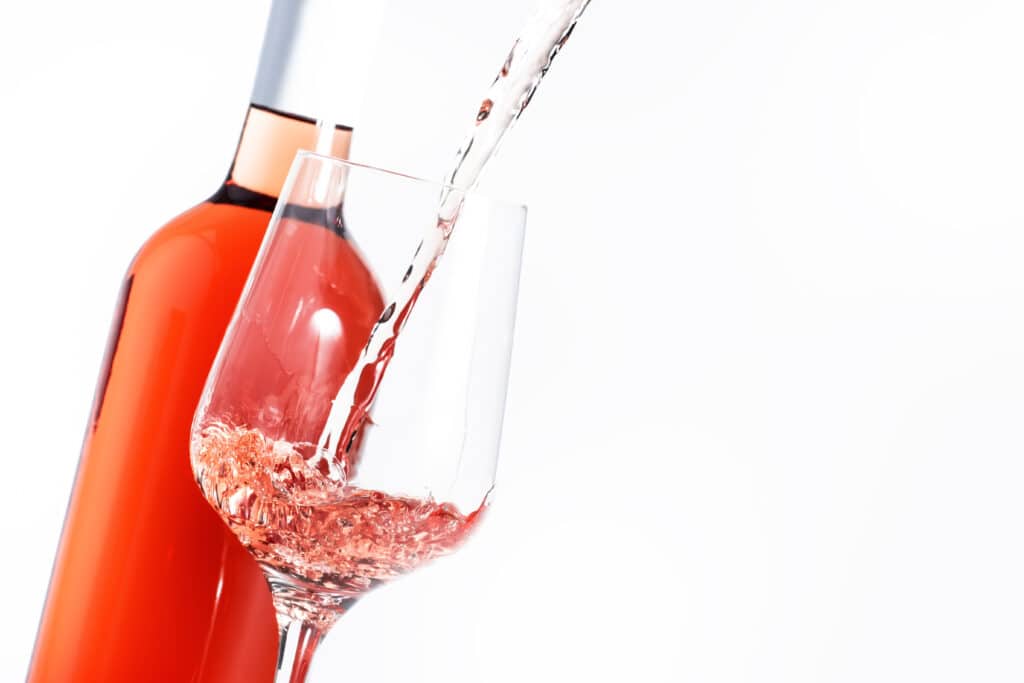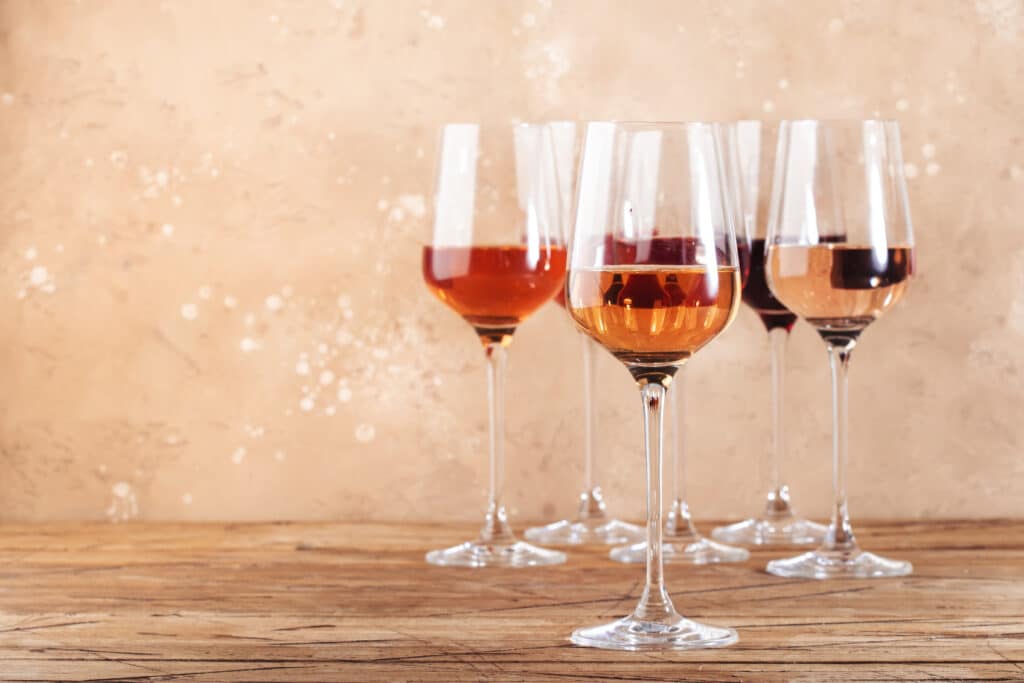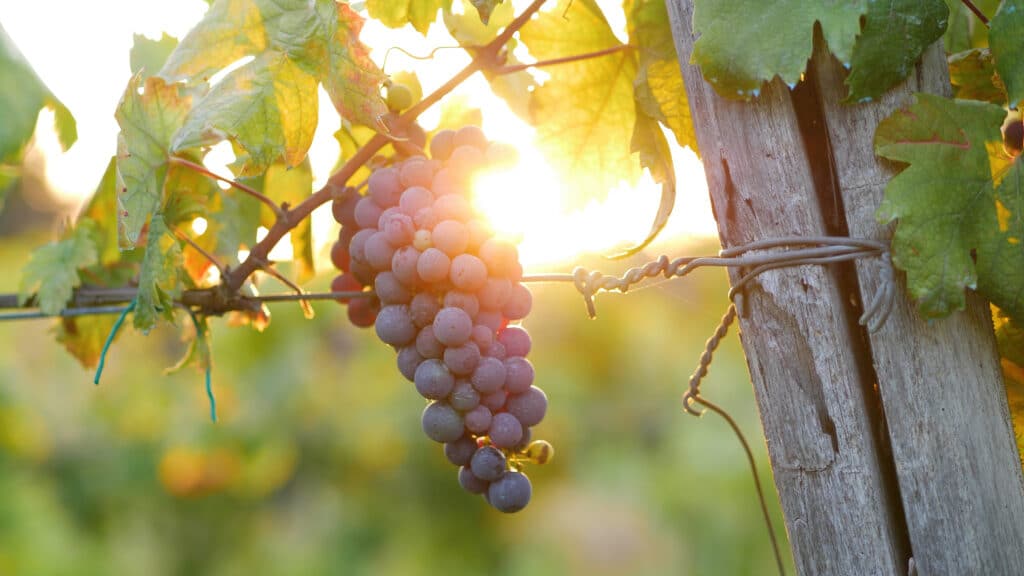From the palace of King Louis XIV to the vineyards of Pennsylvania, rosé wines have always been a part of wine drinking culture. This article offers the essentials of what it is, how it’s made, and what you should be looking out for. There is always a place in our glass for the fresh and whimsical flavors of pink wines.
There are two very different types of pink wine drinkers. Which one are you? Do you only drink wine during the winter holidays? Or are you simply someone looking for a refreshing summertime drink?

History of Rosé in America
If you are younger than Jerry Springer, it probably sounds nuts that people drink pink wines in December. But, back in the nineties, it was as common as acid-washed jeans. E tire families would wolf down Christmas fajitas followed by a molten chocolate cake, washing it all down with glug-fulls of white zinfandel, America’s super-sweet contribution to the world of rosé.
Most Americans lived in the city of saccharin back then. Boyz II Men were ascendant, street drugs were sold as nose candy, Twinkies were a national treasure, and Forrest Gump had its premiere. So is it a surprise that most American adults didn’t drink anything unless it was syrupy sweet?

The New Generation of Rosé
Outside of a few aspirational diabetics, later generations haven’t had such intense sugar cravings. Over the past few years, dry rosé has become more popular as White Zin’s memory falls farther into the past.
Back in the nineties, it was as common as acid-washed jeans. Entire families would wolf down chicken fajitas followed by a molten chocolate cake, washing it all down with glug-fulls of white zinfandel, America’s super-sweet contribution to the world of rosé wines.

How Rosé Are Made
How is rosé wine made, and what’s the best way to buy it?
Rosé is made from red wine grapes like Syrah and Pinot Noir, which have purple pigments in their skins. The grapes are crushed and pumped into a fermenter while making wine. The darker the wine will get, the longer the skins are left in contact with the juice.
If grapes are crushed and the skins are quickly removed, the juice is pink instead of red. Hello, rosé!

Vin Gris
There are two ways to pull the juice off the skins. First, wineries specializing in rosé wines will harvest early and press the juice directly off the skins. These wines are typically very light in color. This style of wine is called vin gris. That’s French for “grey wine,” which is weird, but the definition of grey was a bit different in the 18th Century.
Saignée
The other way to make a pink wine is to crush the grapes and add the skins and juice to the tank. The winemaker then quickly bleeds off half the wine from the fermenter and pumps it into another tank. This is the saignée technique, and it allows the winery to make a red and rosé wine from the same grapes. The wine made with this technique is typically darker in color.
The Best Rosé Wine (Reviews)

As the popularity of pink wines explodes, there has been an explosion of pink wines in stores. However, not all pink has been created equal. L t’s talk about some recommendations for this summer.
Pierre Marie Chermette “Les Griottes” Beaujolais Rosé
Rosewater, quince, wild strawberries, and burnt butter. G may. A full day of maceration before being pressed off the skins. A classic French wine.
Badenhorst Family Wines “Secateurs” Rosé, Swartland
A directing press of Cinsault blended with Syrah that was given 2 hours of skin contact. F esh watermelon and raspberry with lavender notes. Very fresh and pure. A great wine from South Africa.
Commanderie de la Bargemone Rosé, Coteaux d’Aix en Provence
A centuries-old winery that is a benchmark producer. Grenache, Cabernet Sauvignon, and Syrah. Wild strawberry, marmalade, and lush. Another classic from France!
Julia’s Dazzle Pinot Gris Rosé, Columbia Valley
Some of the most extraordinary pink wines in the US come from Washington State. This is one of many excellent bottlings.
Crios de Susana Balbo Rosé of Malbec, Mendoza
A delicious example of the saignée. Dark pink with flavors of maraschino cherries and mango. One of many great wines from Argentina.
Les Jamelles “Clair de Rose” Vin Gris, IGP Pays d’Oc, France
Bright fresh watermelon is woven into crushed florals and ripe strawberries. Crunchy but lush, this is an exceptional French pink wine of Cinsault and Grenache.
Luxury Bottles of Pinkness!
Gerard Bertrand “Clos du Temple” Rosé, Cabrieres
A top note of cedar brings a smoky delight to this lush wine. Deep oak notes of vanilla and allspice balance out the exotic fruit flavors of mango and blood orange. The leesy richness is balanced against a rising acidity. This is a luxury bottle of pink wine, with a price tag of over $100.
Lopez de Heredia Tondonia Gran Reserva Rosé
This is a unique wine on this list, and not just due to its price (well over $100 a bottle). It’s a classic style of Claret, which was famous in the 17th Century. This is oxidized and complex in a way that no modern wines are. This is a love-or-hate bottle.
Chateau d’Esclans “Garrus” Cotes de Provence Rosé
Texture, ripeness, and decadence. This bottle pushed the definition of pink wines into the luxury category when it was introduced a decade ago. Flavors of currant and baking spices are layered over powerful mineral and eucalyptus notes.
Frequently Asked Questions
Is rosé sweet or dry?
A pink wine can be either sweet or dry. In the past, pink wine produced in the USA was semi-sweet. However, most popular rosé wines are now dry.
What does rosé taste like?
Rosé wines typically take like tart red fruit, with mineral and citrus notes. Depending on the grape variety used, there will be other flavors, as well.
Is rosé real wine?
Pink rosé wine is very much authentic. It’s a red wine with minimal skin content, giving it much more versatility in food and wine pairings.
Why is rosé so popular?
The recent surge in popularity of rosé was no accident. It was the result of a decade of work. Winemakers in regions that traditionally make rosé wine funded marketing efforts to promote the wines. The effect was incredible, considering that these wines were shunned by American wine drinkers not long ago.
